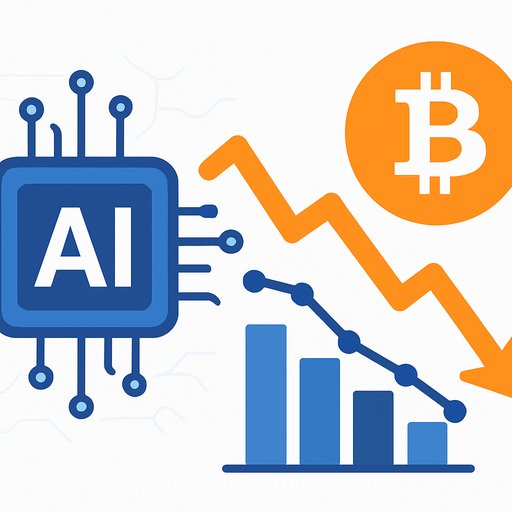Bitcoin Mining Stocks Are Breaking From Bitcoin - What Ops Leaders Need to Optimize Now
Public mining stocks have been rallying since July while Bitcoin trades sideways. That old tight link between miners and BTC price has snapped. The reason is simple: large operators are reallocating capacity to AI infrastructure, and equity markets are valuing that shift more than their crypto exposure.
For operations teams, this isn't a headline. It's a direction change. Capacity, contracts, and cash flow planning now pivot around AI workloads as much as block rewards.
Why the shift is sticking
- AI workloads offer steadier revenue and stronger margins than pure Bitcoin mining.
- Investors are pricing miners on AI potential, not just hashrate or BTC beta.
- Large miners with capital can toggle capacity between AI and Bitcoin. That flexibility is now a competitive moat.
That changing incentive structure means ops leaders will be judged on allocation decisions, not just throughput.
Mining economics: tighter margins, tougher calls
The April 2024 halving cut block rewards from 6.25 to 3.125 BTC. JPMorgan pegs current average production costs near $92,000 per BTC, with a projection around $180,000 after the next halving in April 2028. Meanwhile, Bitcoin trades near $109,700.
Energy, hardware refreshes, and power contract renewals keep those costs high. If hashrate growth slows because capacity shifts to AI, that could restrain further cost inflation-but it won't undo the squeeze you feel today.
Operational implications you can act on
- Capacity allocation: Build a live model to shift racks between BTC and AI based on margin per MWh and contract constraints. Set thresholds and automate alerts.
- Power strategy: Prioritize contracts with flexible offtake and curtailment economics. Explore time-of-use arbitrage and demand response revenue where possible.
- Hardware roadmap: Stagger upgrades. Pair next-gen ASICs for peak-efficiency windows with GPU/AI clusters for consistent cash flow.
- Data center readiness: Confirm cooling, redundancy, and networking can support AI densities. Plan for phased retrofits instead of big-bang builds.
- Treasury and diversification: Smaller operators are testing ETH/SOL treasury strategies and selective diversification. Keep exposure rules clear and liquid.
- Vendor and lead-time risk: Lock in delivery schedules for transformers, switchgear, and cooling. Penalties for slips save more than they cost.
KPI set for weekly reviews
- Margin per MWh by workload (BTC vs. AI) and breakeven BTC price by site
- Effective hashrate per kW and fleet efficiency (J/TH) trends
- Rack utilization and time-to-reallocate capacity (hours/days)
- All-in cost per BTC vs. market price, with sensitivity to power +5%, -5%
- Contract coverage (months of hedged power) and renewal cliffs
Scenario planning that actually helps
- Base: BTC flat, AI demand steady - maintain a 60/40 split favoring the higher-margin side.
- Stress: Power +15%, BTC -10% - accelerate AI allocation and pause low-efficiency ASICs.
- Upside: BTC +25% - pre-stage racks and power to swing back within 72 hours.
Second-order effects to watch
- Hashrate growth deceleration: If miners lean into AI, network competition may cool, which can stabilize BTC costs for those who stay.
- Consolidation: Capital-light operators face a tougher runway; expect M&A and colocation demand spikes.
- Regulatory and grid constraints: AI clusters bring different scrutiny on power usage and siting. Get ahead of permits and community relations.
Some miners, including BitMine and BIT Mining, are already diversifying. Smaller shops will need partnerships or treasury strategies to stay liquid through hardware cycles and renewals.
What to do this quarter
- Stand up a cross-functional allocation desk (ops, finance, trading) with authority to move capacity weekly.
- Reprice every power contract with current curtailment and capacity rates; reopen negotiations where terms are misaligned.
- Run a fleet efficiency audit; retire or relocate the bottom 10% of ASICs.
- Prequalify two AI customers or brokers per site to reduce time-to-fill for GPU workloads.
- Document a 72-hour swing plan between BTC and AI with clear triggers and checklists.
If you need a refresher on core mining cost drivers and energy modeling, the Cambridge Bitcoin Electricity Consumption Index is a solid reference point: CBECI. For a primer on halving mechanics and timing, see this overview: Bitcoin Halving.
Upskilling your team for AI data center operations can shorten the learning curve. Browse role-based programs here: Complete AI Training - Courses by Job.
The headline isn't just that mining stocks broke away from Bitcoin. It's that operating agility-how quickly you can reallocate power, racks, and capital-now sets the ceiling on your margins. Build the switch, keep it oiled, and make the move when the numbers say go.
Your membership also unlocks:






